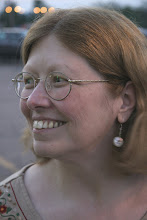 Kevin Scanlon Photographing at Dawn
Kevin Scanlon Photographing at Dawn copyright by Dory Adams, all rights reserved
In case you’ve been wondering, I haven’t gone missing. I’ve been on the road, traveling with my favorite photographer, Kevin Scanlon (who also happens to be my husband). Kevin shows me the world in ways that I would otherwise miss. All I have to do is hang out with him and watch him work to see things in new ways. Believe me, it’s not just with anyone that I would venture out early enough to watch dawn break over the city on a cold morning. Writer Jack Kerouac, who was a friend of photographer Robert Frank (Kerouac wrote the introduction to Frank’s book The Americans), once said that a good lesson for any writer is to pay attention to how a photographer works and to look at what he shoots. I say, Amen.
There’s an excellent interview with Kevin at “Wedge of Smoke” by Chris Crook, which reveals insight to his creative process and the evolution of his subject matter. Click here to read the interview and see some of Kevin’s photographs.
In case you’ve been wondering, I haven’t gone missing. I’ve been on the road, traveling with my favorite photographer, Kevin Scanlon (who also happens to be my husband). Kevin shows me the world in ways that I would otherwise miss. All I have to do is hang out with him and watch him work to see things in new ways. Believe me, it’s not just with anyone that I would venture out early enough to watch dawn break over the city on a cold morning. Writer Jack Kerouac, who was a friend of photographer Robert Frank (Kerouac wrote the introduction to Frank’s book The Americans), once said that a good lesson for any writer is to pay attention to how a photographer works and to look at what he shoots. I say, Amen.
There’s an excellent interview with Kevin at “Wedge of Smoke” by Chris Crook, which reveals insight to his creative process and the evolution of his subject matter. Click here to read the interview and see some of Kevin’s photographs.



















